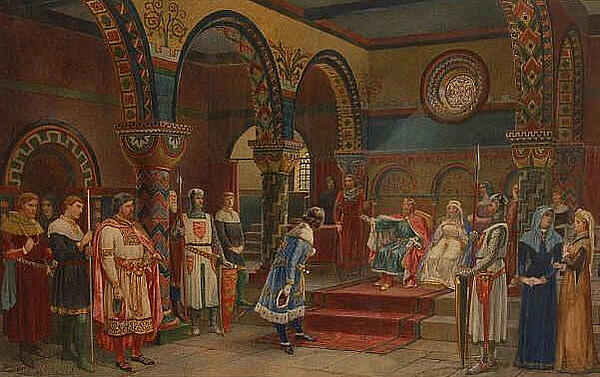Medieval Law and Order
Law and order in Medieval England was extremely strict. Those leading the charge in this area seemingly believed the only way to teach people how to behave was to put strong punishments in place, even in the case of small offences.
This attitude was considered particularly important at this time due to the huge number of poor people across England, who easily outnumbered the wealthy and could cause significant damage should they revolt. This was the case in the Peasants’ Revolt of 1381, when London was targeted by disgruntled peasants from Essex and Kent.

Upon the coronation of Henry II, the legal system entered a new era. Henry decided to send out London judges of his choosing to hear cases across all of England’s counties, demanding that each person must endure one of three ordeals to prove their innocence.
- Ordeal by fire: The accused would be forced to hold a red hot iron bar and walk three paces. The wound would they be bandaged and left for three days. Should their wound show noticeable improvement, they would be declared innocent.
- Ordeal by water: The accused would be tied up and thrown into water. If they floated they would be found guilty, but if they did not it would be concluded that they were innocent.
- Ordeal by combat: If noblemen were accused this ordeal could be used to allow them to fight their accuser in combat. the winner would be declared right, with the loser often being killed.
The Pope decided in 1215 that English priests would not be allowed to help in any way with the ordeals, and should be replaced with jury trials. This change was disliked at first as many believed their neighbours would take part in the jury and use the trial as revenge. However, a law was passed in 1275 that would allow people to face torture if they failed to attend the court, and so trial by jury was considered the favourable option.
Despite Henry II’s reforms, the punishments for being found guilty remained incredibly harsh. For example, those found guilty for stealing would have their hands cut off, illegal hunters would have their ears cut off and those who committed high treason would be hung, drawn and quartered. These punishments were favoured over imprisonment by royalty and nobility as there very few prisons available and the costs for running them had to be covered by local communities.
The popularity of low cost punishments meant towns often had a dedicated gibbet, where people would be hung and their bodies would be left as a warning to others. In spite of this, people continued to commit crimes. In 1202 in Lincoln alone, a total of 114 murders, 89 violent threats and 65 injuries following fights were recorded. However, just two people were forced to face execution for these crimes, suggesting that many people took advantage of the relative lack of law and order and managed to escape before they were punished.
See also:
MLA Citation/Reference
"Medieval Law and Order". HistoryLearning.com. 2025. Web.
